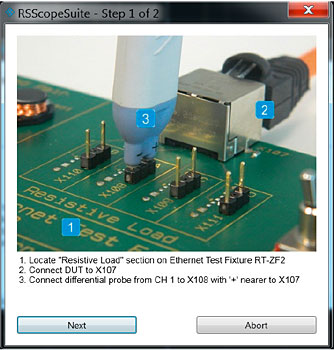

Lastly, the electrical performance of this hardware will be demonstrated with both component and link level testing results. NETBridge Automotive Ethernet Connector System is designed for the automotive environment and can transmit up to 100Mbit/s and 1Gbit/s according to IEEE 100BASE-TBASE-T1. This is followed by the introduction of a modular and scalable MATEnet Ethernet connection system utilizing an optimized cable termination technology. Through simulations and testing, the connector design criteria and rules necessary for meeting all the electrical and mechanical requirements for such automotive applications are evaluated and shown. Automotive relevant signal integrity (SI) and electromagnetic compatibility (EMC) connector limitations are also discussed in detail. This paper explains the specific challenges for high speed UTP solutions applied in automotive environments.
Automotive ethernet connector free#
While 100Mbps transmission speeds can be achieved with standard connector platforms, 1Gbps requires specific design rules in order to ensure error free transmissions. Standard atmospheric conditions.Ethernet technology using a single unshielded twisted pair (UTP) is considered to have a promising future in the automotive industry. Sweep rate 1 octave/min.ĭuration: 2 hours per axis, total 6 hoursĪxes: x, y, z. SPE products could pass electromagnetic compatibility (EMC) tests of vehicles and meet high bandwidth requirements of LiDAR and radar of ADAS.Nextron’s M8 4 Way comply with IEEE 802.3bp and IEC 63171-6 standards.Īmplitude: 0.35 mm. It can support up to 1000Base-T1 (1Gbit/s) with 15m UTP unshielded/40m STP shielded cable. Nextron’s SPE products are one of the very few 4 way SPE circular connectors available on the market. By leveraging on capabilities in high-speed signal processing and mechanism design, Nextron first invested in the 1000Base T1 architecture and launched 1Gbit/s SPE connector and cable solution.

Moving with the trend, Nextron has joined the SPE Industrial Partner Network aand teamed up with global leading brands to promote and improve the ecosystem of automotive Ethernet, a.k.a Single Pair Ethernet (SPE). With data rates of up to 100Mbps or 1Gbps, automotive Ethernet meets the high-speed data transmission needs of digital radar, LiDAR in future self-driving cars. OPEN Alliance SIG members such as Broadcom, BMW and other major players are putting effort into the promotion of automotive Ethernet applications.Ĭompared to traditional Ethernet technology, 100BaseTBaseT1 use a single pair of unshielded twisted cables, which significantly reduces up to 80% of cost and 30% of cable weight while complying with automotive electromagnetic radiation regulations. To solve the issues of electromagnetic interference, cost and weight of Ether net, Institute of Electrical and Electronics Engineers (IEEE) has established 100BaseT1 (802.3bw) and 1000BaseT1 (802.3bp) as the standard for automotive Ethernet. The demand of high bandwidth and multiple systems operation poses a huge challenge to communication interface.īandwidth Requirements of Automotive Applications One of the biggest challenges EE architectures are facing is the integration of systems such as high-resolution cameras, radar, LiDAR, and ADAS. Even while the latest infotainment system is adapting 150Mbp data rate MOST structure, Ethernet is still highly expected with its great potential. Ethernet has long been adapted by the automotive industry, such as in 1Mbps Controller Area Network (CAN) for ECU.


 0 kommentar(er)
0 kommentar(er)
